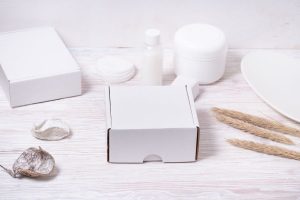16 Packaging Materials and How to Use Them

Packaging your products requires you to have the best possible materials to ensure your product is well-protected and can be transported safely in the best way possible. You also want to make sure that the packaging meets the expectations of your end consumers and delivers on your brand image.
However, with so many different packaging materials out there, it can be daunting to choose a packaging solution that meets all your criteria. In this article, we’ll help you understand common packaging materials and what applications they are best for, along with guidance on how to go about choosing the right packaging materials for your business.

What are Packaging Materials?
To begin, let’s define what a packaging material is. Packaging materials refer to the various components employed in the process of packaging products, including the containers used for product distribution, the materials utilized for transportation, and the external packaging used during shipping. Examples of packaging materials include plastics, metals, cardboard boxes, bio-plastics, and paper. Determining the optimal combination of materials for your products and packages is a crucial task that must be undertaken for each product you sell.

Why is Choosing the Right Packaging Materials Important?
Selecting the right type of packaging is vital to your business operations. It’s important to carefully consider your options and use effective strategies when deciding which packaging materials to proceed with. Let’s explore a few key reasons why you should make a careful and informed choice when it comes to choosing what packaging materials you should use.
Product Protection
The first reason is the protection of your products. Every time a product is damaged in transport or even after purchase, it will cost your business financially. It’s important that you utilize a material that is designed to protect the items you sell and help them stay secure through the many locations they’ll pass through during their journey through the supply chain, from shipments to storage and to the consumer’s home, you’ll want to ensure that your product is well-protected.
Cost-Effectiveness
Selecting a material that is cost-effective is a great option. You certainly don’t want to spend more on packaging than the return you expect from your product. While some packaging materials might look nice, if they won’t provide a cost benefit to your business, it ultimately may not be the best solution for your product packaging needs.
Sustainability
Sustainability plays a very important role in the world today. More and more businesses are focusing on their carbon footprint and impact on the environment. By picking sustainable packaging materials that are reusable, recyclable, or biodegradable, you can have a positive impact on the environment and improve your company’s reputation. Whether you’re looking for eco-friendly options for food packaging or just looking for more information to begin your transition to more sustainable packaging for your particular industry, we are here to help you on the path to sustainability.
Regulatory Compliance
Certain industries have specific regulations regarding the shipment of materials. For example, some of these regulations ensure the safe handling of particular chemicals or volatile products by requiring them to be stored in specific containers. Creating a quality control checklist and complying with regulations is crucial for the success of your business, making proper packaging even more important.
Brand Image
Finally, it is essential to consider your brand image when selecting packaging materials. Since the packaging will be seen by end consumers for retail products, it should align with your brand’s overall vision. For instance, if you specialize in luxury beauty products, it is important to avoid choosing packaging that appears inexpensive, as it could potentially discourage your customers from making a purchase. Ease of use or access to the product is also an important consideration that is determined by the packaging’s compatibility and can contribute to your brand reputation.
How to Choose the Right Packaging Materials
Picking the right packaging materials first requires a thorough understanding of your products. What containers are most compatible with your product? What type of product are you selling, and how should it be contained?
You also want to consider the transportation and shipping of the product. What type of packaging is going to be most cost-effective while still helping the product reach the end goal safely and securely?
Finally, consider how it will be displayed in stores for the end consumer. What will look best and feel most authentic to your brand on the shelf?

16 Packaging Materials for Your Products
1. Acrylic
About Acrylic
Acrylic is a popular resin that can be frosted or treated after production. It’s known to be more cost-effective than glass and provides an elegant finish to products.
Acrylic Use Cases
Acrylic containers are used in the beauty industry, cosmetics industry, and personal care industry.
2. Aluminum
About Aluminum
A lightweight option, aluminum is a metal that can be used to form packaging and closures. It can also be recycled, making it a popular choice.
Aluminum Use Cases
The industrial industry, personal care, pharmaceutical, food and beverage industries.
3. EVOH (Ethylene-Vinyl Alcohol Copolymers)
About EVOH
EVOH, or ethylene-vinyl alcohol copolymers, is a strong thermoplastic with barrier properties. However, it can lose some of its barrier properties when exposed to moisture, so it is often combined with HDPE, PP, or PET.
EVOH Use Cases
The food industry, the pharmaceutical and nutraceutical industry, and the personal care industry.
4. Glass
About Glass
Glass is versatile in color and shape, and is recyclable and reusable, so it is found across many industries. It’s often available in amber, cobalt, flint (clear), and green colors. Glass bottles and jars can elevate a product’s packaging and are commonly used in beverage and personal care products.
Glass Use Cases
Nearly every industry uses glass in some form.
5. HDPE (High-Density Polyethylene)
About HDPE
HDPE, or high-density polyethylene, is a popular, durable material that is known to have good barrier properties. It is available in many colors, shapes, and sizes, and can be stored in both below-freezing temperatures and hot-filled applications.HDPE is strong and resistant to moisture and chemicals, which makes it ideal for cartons, containers, pipes, and other building materials. Air pillows are also made from HDPE which is a more recyclable option compared to traditional packing supplies like styrofoam peanuts or bubble wrap.
HDPE Use Cases
Pharmaceuticals industry, chemical industry, and food and beverage industry.
6. Kraft Paper
About Kraft Paper
Kraft Paper is a type of chemical wood pulp that is used to make products like paper packaging, cardboard boxes, and paperboard. It is also created with other pulp materials such as bamboo and the byproducts of corn and rice. This is a common material used for sustainable packaging.
Kraft Use Cases
Almost all industries use Kraft Paper in some form.
7. LDPE (Low Density Polyethylene)
About LDPE
LDPE, or low density polyethylene, is much less rigid than HDPE, and is used in flexible packaging. It is also resistant to oils and acids.
LDPE Use Cases
Chemical industry, beauty industry, food industry, and pharmaceutical industry.
8. MDPE (Medium Density Polyethylene)
About MDPE
MDPE, or medium density polyethylene, is a plastic that is a middle ground of strength and flexibility between HDPE and LDPE. It is created with various flexibilities by adjusting the different ratios of HDPE and LDPE.
MDPE Use Cases
Chemical industry, pharmaceutical industry, beauty industry, and food and beverage industry.
9. PCR (Post Consumer Resin)
About PCR
PCR, or post-consumer resin, is an environmentally friendly packaging option made of recycled plastics. It is typically made by blending recycled PET and HDPE plastics with virgin material to form products to use for packaging. The amount of PCR content used in this plastic packaging material can vary from 10% to 100% PCR. The core benefit of PCR is reusing recycled plastics to reduce waste in landfills.
PCR Use Cases
The shipping industry, food and beverage industry, and personal care industry.
10. PE (Polyethylene)
About PE
PE, or polyethylene, is available in various densities and is the resin that makes up HDPE, LDPE, and MDPE plastics. It can vary in composition, making it a durable material for various packaging applications. PE is the most common plastic in the world, however, it’s classified into three types: High-Density (HDPE), Low-Density (LDPE), and Medium-Density (MDPE), all mentioned separately on this list.
PE Use Cases
Almost all industries use one form or another of PE.
11. PET (Polyethylene Terephthalate)
About PET
PET, or polyethylene terephthalate, is a clear and smooth plastic known to have excellent barrier properties against many gasses, liquids, and most solvents. In addition, it has a high shatter resistance.
PET Use Cases
Beauty industry, personal care industry, and food and beverage industry.
12. PP (Polypropylene)
About PP
PP, or polypropylene, is commonly used to create various caps and closures. It is a strong plastic with chemical resistance properties due to its high melting point. Packing made from this material is suitable for hot-fill applications.
PP Use Cases
Chemical industries and food and beverage industry.
13. PS (Polystyrene)
About PS
PS, or polystyrene, is known for its clarity and similar appearance to acrylic and glass when in rigid form. It has an excellent moisture barrier but does have poor impact durability. It is often used to make jars.
PS Use Cases
Personal care industry and food and beverage industry.
14. PVC (Polyvinyl Chloride)
About PVC
PVC, or polyvinyl chloride, is known to be resistant to oxygen, oils, and many chemicals. It is a versatile plastic with a fair impact resistance.
PVC Use Cases
Personal care industry and food and beverage industry.
15. Steel
About Steel
Steel is a strong alloy made of iron and carbon. It provides properties like high impact resistance and promotes use for large volume packaging for pails and drums.
Steel Use Cases
Chemical industry and pharmaceutical industry.
16. Tinplate
About Tinplate
Tinplate is a metal that is composed of steel with a thin layer of tin on top to prevent rusting. It can be used in multiple packaging applications, including containers and closures.
Tinplate Use Cases
Chemical industry and industrial industry.

Best Practices for Packaging Materials
Now that you are a little more familiar with the different types of packaging materials that you could consider using for your products, let’s discuss some best practices for packaging to keep in mind when identifying the best packaging to accommodate your product’s needs.
Evaluate Your Product
The first best practice is to carefully evaluate your product. What is it exactly that you are selling? How does a consumer expect the product to be presented on the shelf? For example, you wouldn’t want salsa from a flexible plastic bag or eye cream from a cardboard box. Understanding the ingredients that make up your product packaging is an essential step in finding what works best for your product. As you’re probably aware, there are many types of plastic available on the market. It would be beneficial to familiarize yourself with the different types of resins used in new products to identify compatibility with your product’s ingredients.
Optimize Your Packaging Design
In addition to the material you choose, you also need to think about the design of the packaging you pick. What will draw the consumer’s attention to your product, what messaging can you display on the packaging, and how can you use your packaging for brand marketing?
Utilize the Right Testing and Certification
You should always test your packaging and ensure that you are making the right choice before finalizing an order. You can even get certifications for your product packaging to make sure that it protects your products safely which is especially important for hazardous products.
Streamline Your Supply Chain
Packaging is just one step in your supply chain. Finding ways to streamline your packaging helps you improve the effectiveness of your entire supply chain. That ultimately means you can save time and money in your shipping and distribution processes.
Let the Experts Help You Choose the Right Packaging Material
Finding the right material for your packaging is an important part of running your business. Once you’ve found the right material, it’s important to test and monitor the complete package to ensure it’s a good fit for your brand or if you need to find a new packaging solution. To help you narrow down your options and find the best packaging material for your products, streamline the process by working with experts.
At Paramount Global, we’ve helped businesses find the best packaging solutions and perfect their product packaging for 47 years. Contact us today to learn more about how we can help you improve your business processes.
Still want to learn more about choosing packaging materials for your products? Check out these other articles:
Hayley is a marketing professional and copywriter with a background in crafting content for a diverse range of industries. She has been writing about packaging and supply chain logistics for Paramount Global since 2022. She specializes in explaining complex topics in a clear and engaging way and is an advocate for sustainability in packaging and supply chain management.
Read More
For over forty years, Paramount has been delivering perfectly integrated packaging and supply chain solutions.
